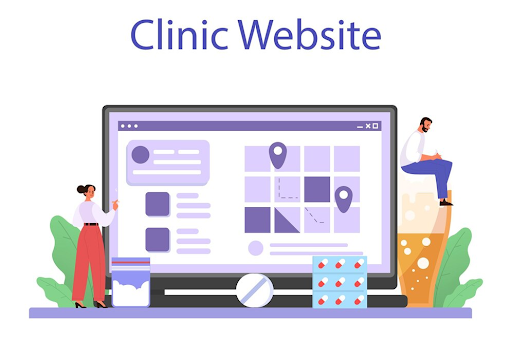To sign up for our daily email newsletter, CLICK HERE
Planning the system design and architecture of a telemedicine platform is a complex process that requires a thorough approach and knowledge in a particular area. However, innovative technologies do not stand still, and telemedicine is no exception. It is increasingly expanding its capabilities in providing medical services, significantly simplifying the experience for patients and doctors. In this article, we will touch on the specifics of planning the design of a new modern telemedicine platform in more detail.

Key Components in Creating a Telemedicine Platform
Before you start developing a telemedicine application, it’s essential to identify its core features that will benefit patients and doctors.
Patient Dashboard
Finding the necessary section or information will be challenging without simplified navigation on the patient dashboard, especially for the elderly. The home screen should display personal information, treatment history, prescriptions, reports, and other essential details.
Doctor’s Dashboard
For doctors, patients are a priority, so the app needs to have a user-friendly dashboard. It should provide easy and quick access to important information about each patient. This includes demographic data, previous and current treatments, lab results, and the ability to create and download reports, sharing data with other doctors.
The creation software is the responsibility of specialized companies that have experience in developing telemedicine applications – https://qarea.com/industries/healthcare/telemedicine.
You, as an interested party, have to understand the importance of a development partner, because the success of this application as a whole will depend on it.
Video Conferencing
Video calls have become the heart of telemedicine, opening up new avenues for communication between doctors and patients. This allows them to have the necessary consultation that cannot be achieved by phone or text.
Messaging
Patients can communicate with doctors via quick messages when the app is created. This will create a comfortable atmosphere for communication, allowing patients to instantly get answers to their questions and clarify essential treatment details.
EHR Integration
Develop telemedicine solutions that easily integrate with electronic health records (EHR). This effective combination allows patients and doctors to interact directly, opening new possibilities for data exchange.
Scheduling and Reminders
Implement a scheduling calendar that reminds users of important events and allows patients to view available time slots. This will enable them to book appointments easily at convenient times for both parties.
Remote Patient Monitoring (RPM)
With this feature, the application can automatically track patients’ conditions, recording essential metrics such as heart rate, body temperature, and oxygen levels. This not only simplifies the data collection process but also ensures timely responses to changes in health status.

Electronic Prescriptions and Medication Tracker
Develop telemedicine applications with medication tracking features that enable doctors to monitor prescription history and issue electronic prescriptions conveniently. Integrating medical devices software into these features facilitates seamless communication between devices and the platform, significantly enhancing the quality of patient care and creating a more comfortable environment for their treatment.
Notifications
Implement a valuable feature for push notifications, text messages, or email alerts to enable users to receive important reminders about medication intake, upcoming doctor visits, or test results.
Planning the Architecture of a Telemedicine Platform
Requirements Definition
Gathering all requirements and suggestions from patients and doctors regarding features they would like to see in the platform is crucial in the initial phase. This ensures that the final product meets the needs of its users and enhances the overall user experience.
Architecture Design
The architecture design involves creating a structural diagram that includes all system components: the client interface, server-side, databases, and APIs. This framework is a blueprint for the platform’s operation and interaction with its various components.
Security and Privacy
Medical platforms handle sensitive information, necessitating high security, such as biometric or two-factor authentication, to protect user data. Implementing robust security measures is essential for maintaining user trust and complying with legal regulations.
Testing and Feedback
Once a platform prototype is developed, comprehensive testing is essential to assess its functionality and usability. Engaging users to gather feedback helps identify flaws and provides valuable insights for enhancing the interface and features.
Analysis and Improvement
Once the platform is launched, it is important to regularly analyze its performance and adapt to new technologies and user needs. However, continuous improvement is necessary to ensure the platform remains relevant and effective in delivering telehealth services.
Conclusion
Planning a telemedicine platform’s system design and architecture is an important step that requires significant investment in creating an effective solution. This process requires an integrated approach, considering technical and user needs and integrating advanced technologies into telemedicine, which is essential for delivering high-quality medical services.